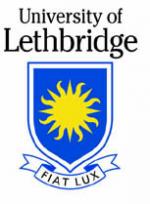Innovation Anthology #587:
Dr. David Naylor teaches astrophysics at the University of Lethbridge.
He’s also amongst a group of space scientists around the globe who have just been honoured with a special award from the Royal Astronomical Society.
The prize winning instrument Dr. Naylor and the other scientists developed senses light in the far infrared wavelengths. It’s about the size of a briefcase. And it was launched in 2009 to fly with the Herschel Space Observatory.
DR DAVID NAYLOR: We’ve known for a long time that stars are formed in the spiral arms of galaxies and they are formed in the coldest regions of space and we’ve not been able to probe those. So now we can see the prenatal nursery where stars are starting to be born in our galaxy. And it really is awe inspiring. And I think the other advances are in cosmology, the high red shift galaxies and starting to get a handle on knowing when the first galaxies were formed, It’s provided our first unfettered view of this wavelength range that allows us to understand how this universe works.
Dr. Naylor likes the idea that the award from the Royal Astronomical Society is named after Sir William Hershel, the man who discovered infrared radiation.
Learn more at InnovationAnthology.com
I’M CHERYL CROUCHER
NEWS RELEASES:
From the Royal Astronomical Society
The Group Achievement Award for achievement by a large consortium in astronomy is given to the Herschel-SPIRE Consortium.
This consortium is led by Professor Matt Griffin of Cardiff University. The Spectral and Photometric Imaging Receiver (SPIRE) consortium was responsible for the design, construction and delivery of this bolometer-based instrument as part of the instrument suite for ESA’s Herschel Space Observatory. The Herschel satellite was launched in 2009 and operated very successfully for 4 years, thereby exceeding its design lifetime. By virtue of its unparalleled sensitivity and unique capabilities, the results obtained using SPIRE have been felt across a broad swath of astrophysics and in particular in detailed studies of star formation in the local Universe and extending out to very distant objects. Because of the long wavelengths at which SPIRE operates it is able to penetrate the veil of dust that obscures our view of these regions in visible light. As a measure of its importance, by summer 2013 more than 500 refereed scientific publications had used SPIRE data. The fantastic success of Herschel-SPIRE is a fitting tribute to all those scientists and engineers who have contributed to the project over many years. The impact of observations obtained using SPIRE will continue to influence and advance astrophysics well into the future.
Guest
,
, , , ,
Sponsor
University of Lethbridge
In 2007 The University of Lethbridge celebrated its 40th anniversary. The U of L campus is home to the world renowned Canadian Centre for Behavioral Neuroscience. The University is also a centre of expertise on water and remote sensing.
For more interviews with University of Lethbridge researchers, check out the website for Innovation Alberta. (2001-2008)

Program Date: 2014-01-21